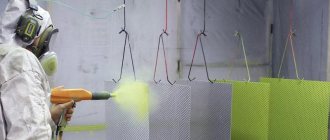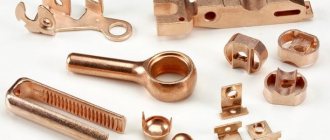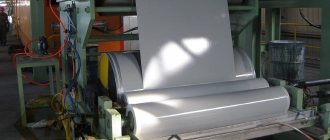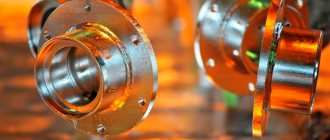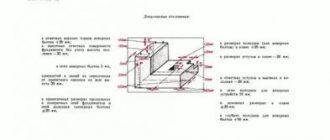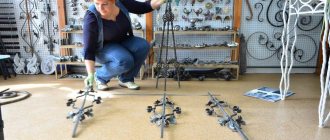Application of technology
Electroplating is often used in relation to various elegant objects (jewelry, orders and medals, coins, shells, flower pots, sculptures, portraits, etc.). Copper is most often used in electroforming. However, other metals can also be used, including nickel, chromium, steel, and silver.
If all technological requirements are met, it is possible to distinguish a copied object from an original one only by the barrier layer or by removing the original. Moreover, it is quite possible to do all the work yourself at home.
Note! The coating of the copied product must be electrically conductive. If the material lacks this property, bronze or graphite is applied to it.
Nickel plating
Coating metal with a layer of nickel at home can be done as a finishing treatment or before chrome plating. This process is called “galvanostegy”, since a layer of nickel applied to the surface of the product increases its resistance to negative environmental factors. In addition to its high protective properties, the nickel layer is also distinguished by its decorative appeal.
The electrolyte temperature when performing nickel plating does not exceed 25°, and the current density is within 1.2 A/dm2. The electrolyte, the acidity of which should be within 4–5 pH, is an aqueous solution containing chemical elements such as nickel sulfate, magnesium, sodium, table salt, and boric acid.
After the electroplating process is completed, the product is removed from the electrolytic solution, washed in water, thoroughly dried and polished.
Creating a Form
We take a print from the product that we will copy. To do this you will need some kind of low-melting metal, plasticine, plaster or wax. If we use metal, we treat the item being copied with soap and put it in a cardboard box. Next, pour in a low-melting alloy.
When the casting is completed, we take out the product and subject the resulting form to first degreasing and then copper plating in an electrolyte. To avoid metal deposits on those sides where there is no imprint, we melt the metal in boiling water to obtain a matrix. Fill the form with plaster. The output is a copy.
To create a matrix you will need the following composition:
- wax - 20 parts;
- paraffin - 3 parts;
- graphite - 1 part.
If the mold is created from a dielectric material, we apply an electrically conductive coating to its surface. The conductor layer is applied either by metal reduction or mechanically, which involves applying flake graphite using a brush.
Even before mechanical surface treatment begins, we grind the graphite in a mortar and sift it through a sieve. The best adhesion of graphite is observed with plasticine. It is most effective to treat plaster, wood, glass and plastic forms, as well as papier-mâché, with a solution of gasoline and wax. When the surface has not yet dried, we apply graphite dust to it, and blow off the adhering substance with a directed air flow.
The electroplated coating is easy to separate from the matrix. If the mold is metallic, we create an oxide or sulfide conductive film on the surface. For example, on silver it will be chloride, on lead it will be sulfide. The film will help you easily separate the mold from the coating. In the case of copper, silver and lead, coat the surface with a 1% sodium sulfide solution to create insoluble sulfides.
Chrome plating
Galvanic chrome plating at home or at a production plant allows you to give the surface layer of the processed product higher hardness, corrosion resistance, and also decorativeness. Since chrome plating is characterized by fairly high porosity, it is performed after galvanic application of copper to the workpiece (or nickel plating). To perform this technological operation, anodes are used that are made of an alloy of lead, tin and antimony.
Installation of galvanic chrome plating
The final result of chrome plating, which is quite difficult to do at home, since it requires the use of high-density currents - up to 100 A/dm2, is influenced by various factors. The most significant of them include:
- the temperature of the electrolyte used - the shade of the formed coating depends on this parameter, which can be matte (temperature below 35°), shiny (35–55°) and milky (above 55°);
- the chemical composition of the electrolyte, which affects the protective properties of the coating being formed, as well as its color, which can be dark blue, blue, or agate.
The final stage of chrome plating after removing the part from the electrolytic solution is washing the treated surface with water, subsequent neutralization in a baking soda solution, another washing, drying and polishing using special pastes.
Materials and equipment
When the mold is ready, place it in a galvanic bath connected to an electric current (to prevent the release film from dissolving). First, we coat the conductive copper layer under conditions of low current density.
We will need the following composition:
- copper sulfate - 150-200 grams;
- sulfuric acid - 7-15 grams;
- ethyl alcohol - 30-50 milliliters;
- water - 1 liter.
The operating temperature in the electrolyte bath is 18-25 degrees Celsius. Current density is from 1 to 2 Amperes per square decimeter. Alcohol will be needed to improve the wettability of the coating. A car battery charger can be used as a DC source. We also need an ammeter with the ability to measure current from 0 to 3 or 5 amperes. Usually the chargers already have an ammeter.
Nichrome wire will serve as a rheostat. We wind it on any ceramic plate. A coil from an electric heater will do just fine.
Any plastic container with a volume from 2 to 50 liters, depending on your needs, is suitable as a bath. We use a copper plate as an anode.
Note! The anode area should be approximately equal to the area of the workpieces.
To create a conductive layer for the product, add a few drops of varnish to the bronze powder. It is recommended to use colorless nitro varnish. The varnish needs to be made more liquid, so dilute it with acetone to the consistency of a liquid paint and varnish composition.
Copper plating
Copper plating using electroplating at home is necessary in order to create a conductive layer on the surface of the workpiece, characterized by a low electrical resistance value, and also to protect the part from the negative influence of the external environment.
Applying a layer of copper to steel and cast iron products without first covering them with a layer of nickel is deadly, since this requires the use of cyanide electrolyte.
After preliminary nickel plating, the metal is coated with a layer of copper using a solution of copper sulfate, concentrated sulfuric acid and water at room temperature.
Copper plating by immersion
The process is carried out following the following steps:
- The oxide film is removed from the surface of the steel part using sandpaper and a brush, and then the part is washed and degreased with soda and a final rinse with water.
- Two copper plates are placed in a glass jar, connected to copper conductors, which serve as the anode. To do this, they are connected together and connected to the positive terminal of the device used as a current source.
- The workpiece is suspended freely between the plates. The negative pole of the terminal is connected to it.
- A tester with a rheostat is built into the circuit to regulate the current.
- An electrolyte solution is prepared, which usually includes copper sulfate - 20 grams, acid (hydrochloric or sulfuric) - from 2 to 3 ml, dissolved in 100 ml (preferably distilled) water.
- The prepared solution is poured into a prepared glass jar. It should completely cover the electrodes placed in the jar.
- The electrodes are connected to a current source. Using a rheostat, the current is set (10-15 mA should be per 1 cm2 of part area).
- After 20-30 minutes, the current is turned off, and the copper-plated part is removed from the container.
Copper plating without immersion in electrolyte solution
This method is used not only for steel products, but also for aluminum and zinc products. The process goes like this:
- A stranded copper wire is taken, the insulating coating is removed from one end, and the copper wires are given the appearance of a kind of brush. For convenient use, the “brush” is attached to a handle-holder (you can take a wooden stick).
- The other end of the wire without a brush is connected to the positive terminal of the voltage source being used.
- An electrolyte solution is prepared based on concentrated copper sulfate with the addition of a small amount of acid. It is poured into a wide container, necessary for convenient dipping of the brush.
- The prepared metal part, cleaned of the oxide film and degreased, is placed in an empty bath and connected to the negative terminal.
- The brush is moistened with the prepared solution and moved along the surface of the plate without touching it.
- Once the required copper layer has been achieved, the process ends and the part is washed and dried.
There should always be a layer of electrolyte solution between the surface of the part and the improvised copper brush, so the brush must be dipped in the electrolyte constantly.
Aluminum processing
Cutlery made from aluminum is often renewed using copper electrolysis. If you have no experience in carrying out this process, then you can practice applying copper to aluminum plates. Procedure for carrying out the process:
- The aluminum plate is cleaned and degreased.
- Apply a small amount of copper sulfate solution to it.
- Connect the negative terminal from the power source to the aluminum plate. A good connection method is a metal alligator clip.
- The positive power pole is supplied to the copper “brush”. This is a structure made of copper wire, one end of which is freed from the braid, and the copper bristles form a brush. The power clamp is attached to the other end of the wire. The wire cross-section should be from one to one and a half millimeters.
- Copper bristles are dipped in a solution of copper sulfate and moved at a close distance from the surface of the aluminum plate. In this case, you need to try not to touch the workpiece with the brush, so as not to close the circuit.
- Copper plating occurs literally before our eyes.
- After finishing the work, remove any remaining loose copper from the plate and wipe it with alcohol.
Manufacturing process
We take approximately a 20-centimeter piece of multi-core cable and remove the wire from it. We protect the insulation on both sides of the wire, bend one end of it at an angle of 90 degrees and glue it to the plastic part with instant glue. Moreover, BF glue will not work, since bronze paint will dissolve it.
When the items are dry, we degrease them using household chemicals (for example, washing powder). Next, rinse the product in running water or treat it with acetone.
The parts are firmly fixed to the wire. Now they can be dipped one at a time into pre-prepared bronze paint or this material can be applied with a brush. The entire surface must be evenly painted. It is recommended to use insulated wire from the cable, otherwise copper will fall on the bare wire, which will lead to additional consumption of the anode.
After drying the surface for an hour, twist the dried ends of the wires together. The parts must not touch each other. Next, we connect the products to the positive contact and immerse them in the bath. A few seconds after immersion, the copper plating process, visible to the naked eye, will begin.
The thickness of the copper coating may vary depending on the circumstances, but for small items it will be approximately 0.05 millimeters. The parts are in the bath for 15 hours. The current is adjusted by moving the contact along the nichrome rheostat within 0.8-1.0 Amperes. After copper plating, we increase the current to 2 Amperes. When the curing period of the parts has expired, we wash the items in running water, dry them, and cut off the wire. We clean the wire and prepare it for the next procedure.
Metallization is complete. Next, take sulfur ointment (can be purchased at a pharmacy), apply it to the surface and carry the part over the fire of a gas stove. In this case, the copper will immediately darken.
The next stage is polishing. For this, a motor equipped with a metal round brush is useful. This job requires a certain skill. The result should be a surface that looks like blackened bronze with some shiny areas. If you cannot immediately achieve the desired result, apply sulfur ointment again, heat the product over the fire and polish it.
For those who doubt the effectiveness of the procedure described above, we suggest doing a test. To do this, you will need a container for electrolyte, where you need to put a little copper. Paint one part with a spray bottle in 2-3 layers in bronze color. Next you need to connect to the battery without using a rheostat. The adapter from the player will also work.
Safety requirements
If electroforming is performed at home, many factors must be taken into account. During the process, the bath must be in an isolated room. Children and animals who can knock over everything should not be allowed into this room. The DC source should be checked regularly to ensure it meets its rated specifications. It is better to work with gloves and safety glasses, and also wear an apron or work coat.
Imagination and dexterity will help realize bold artistic ideas. You can coat not only metal conductive products, but even plastic ones coated with graphite spray. This pleasure is not cheap, but the expenses will be repaid by the pleasure of the creative process.
Other metals
In addition to copper, other metals can be applied to a non-metallic surface, including gold or silver. Silver electroplating can be carried out in one of two ways: chemical or electrochemical. Chemical silvering is produced by immersing the product in a boiled solution of silver. The electrochemical process gives a more reliable result, since the coating is more durable as a result of exposure to electric current. Silver electroplating is widely used in the production of jewelry.
So, electroplating at home is quite possible. The process is quite labor-intensive and requires certain skills, but the end result is worth it.
General information about galvanoplasty.
Electroplating is a technique for producing exact metal copies from molds by electrodeposition. More precisely, this is a galvanic method of molding products, during which the metal released during electrolysis reaches a thickness of 0.25-2 mm and reproduces the shape of the surface on which it is deposited. As a result, the coating becomes the product itself.
Currently used in electroplating: Cu, Ni, Ni-Co, Ni-Fe, Ni-Si, Ni-W, Fe, Pb, Cr, Au, Ag. Galvanoplastic copies are created from molten salts using refractory metals: Re, W, Mo.
A special case of electroforming is electrolytic molding. The difference between these processes is that in electroforming the mold is separated from the copy or destroyed, while in electroforming it remains inside.
Important aspects in the process of galvanoplastic formation of products are the preparation of the surface of the mold used, the creation of a conductive and/or separating layer on it.
Galvanoplasty was created by the Russian scientist Boris Semenovich Jacobi in 1836. During experiments with Daniel elements, Jacobi “...saw several almost microscopic scratches of a file that exactly corresponded to each other: concave on the surface of the cylinder and raised on the surface of a separate leaf. Galvanoplasty was the result of this careful research."
Seeing such an interesting phenomenon, Jacobi immediately began searching for its technical application. December 5, 1838 At a meeting of the Academy of Sciences, Jacobi's report on the invention of the electroplating technique was read and samples of galvanoplastic copies of engraved printing plates were demonstrated.
Advantages of galvanoplasty as a molding method:
- high accuracy of reproduction of the micro- and macrogeometric complex relief of the surface on which metal is electrodeposited;
- low cost of tooling and equipment, which allows you to frequently change the design of parts;
- reuse of extension models;
- identity of parts removed from one model;
- in conditions of multi-batch production, the ability to simultaneously produce a large number of parts, which is determined by the size of the baths and the power of the current sources;
- obtaining combined parts, both from various metals and non-metals;
- low labor costs compared to such shaping methods as casting, stamping, and machining.
Disadvantages of galvanoplasty:
- Restrictions in the list of metals and alloys used;
- Relatively low deposition rate;
- Uneven distribution of electrolytic deposits over the relief surface, which entails an increase in the stages of mechanical processing.
The scope of electroforming is very wide: seamless pipes, waveguides, bellows, shaped charge sleeves, art products, components for fusion and nuclear energy research, surface roughness sensors, gold crowns and bridges for dentistry, calibration scales for electron microscopy, housings for hearing aids, microdevices for electronic, micromechanical applications and much more.
How to properly prepare the product for the procedure
After you have made your electroplating apparatus, found all the necessary equipment and chemical components, you can begin such an important process as preparing the product that will be subjected to electroplating. The importance of such a process is very difficult to overestimate, since the quality of its implementation largely determines what characteristics the finished coating will have.
In most cases, preparing a product for electroplating is not limited to just cleaning its surface from dirt and degreasing it. Sandblasting and subsequent grinding using sandpaper and special pastes are also performed.
Galvanic coating highlights all surface imperfections, so the part being processed must be ideally prepared, that is, all chips, scratches and cavities must be eliminated
In order to degrease the surface to be treated before galvanizing, you can use pure organic solvents or prepare a special solution for this purpose. In particular, to effectively degrease steel or cast iron at home, solutions are prepared that contain caustic soda, liquid glass, sodium carbonate and sodium phosphate. Degreasing of products made from such metals is carried out in a solution heated to 90°. Non-ferrous metals can be effectively degreased with solutions containing laundry soap and sodium phosphate.
Compositions of alkaline degreasing solutions
To obtain high-quality galvanic coating both at home and in industrial conditions, it is also necessary to remove the oxide film from the surface being treated, for which special pickling solutions with sulfuric or hydrochloric acid are used.



